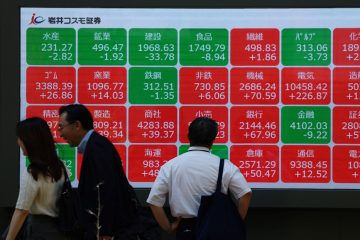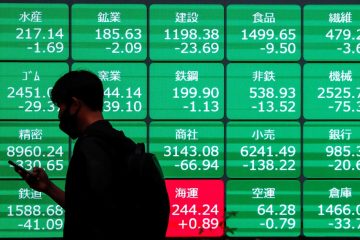| Symbol | Last | Change | % | High | Low |
|---|---|---|---|---|---|
| CHF / JPY | 197.64 | +0.06 | +0.03% | 198.09 | 197.59 |
| Open Last Trade : 10:02 | GMT Time : Fri Jan 02 2026 10:02 | ||||
CHF/JPY : Intraday Live Chart
CHF/JPY : Technical Signal Buy & Sell
| 5 Min Signal | 1 Hour Signal | 1 Day Signal |
|---|---|---|
| Sell | Buy | Buy |
CHF/JPY : Moving Averages
| Period | MA 20 | MA 50 | MA 100 |
|---|---|---|---|
| 5 Minutes | 197.71 | 197.78 | 197.88 |
| 1 Hour | 197.73 | 197.66 | 197.66 |
| 1 Day | 197.14 | 195.32 | 192.41 |
| 1 Week | 190.28 | 181.45 | 176.20 |
CHF/JPY : Technical Resistance Level
| Resistance 1 - R1 | Resistance 2 - R2 | Resistance 3 - r3 |
|---|---|---|
| 197.82 | 197.92 | 198.14 |
CHF/JPY : Technical Support Level
| Support 1 - S1 | Support 2 - S2 | Support 3 - S3 |
|---|---|---|
| 197.50 | 197.28 | 197.18 |
CHF/JPY : Periodical High, Low & Average
| Period | High Change from Last | Low Change from Last | Average Change from Last |
|---|---|---|---|
| 1 Week | 198.35 -0.71 | 0.00 +197.64 | 197.88 -0.24 |
| 1 Month | 198.44 -0.80 | 0.00 +197.64 | 196.06 +1.58 |
| 3 Month | 198.44 -0.80 | 0.00 +197.64 | 192.98 +4.66 |
| 6 Month | 198.44 -0.80 | 0.00 +197.64 | 188.65 +8.99 |
| 1 Year | 198.44 -0.80 | 0.00 +197.64 | 181.60 +16.04 |
CHF/JPY : Historical Chart
CHF to JPY Exchange Rate: Two Safe-Haven Giants with Diverging Monetary Legacies
The CHF to JPY exchange rate represents a rare matchup between two of the world’s most prominent safe-haven currencies. While both the Swiss Franc and the Japanese Yen gain during times of global uncertainty, their relative strength is often shaped by interest rate differentials, central bank intervention, and macroeconomic positioning. This currency pair also serves as a bellwether for global risk-off sentiment.
1990s: Deflation in Japan vs Stability in Switzerland
During the 1990s:
CHF/JPY traded mostly in the 70–90 range.
Japan’s economy struggled with the aftermath of its asset bubble collapse, ushering in a “Lost Decade” of deflation and ultra-low interest rates.
The Swiss economy, though conservative, maintained more stable inflation and interest rate levels.
The yen gained modestly at times due to trade surpluses, but CHF maintained premium status during risk episodes.
2000–2008: Safe-Haven Balance During Global Expansion
In the early 2000s:
CHF/JPY oscillated between 80 and 95, with little directional bias.
Japan kept rates near zero, while the Swiss National Bank (SNB) maintained a small positive rate regime.
Both currencies benefitted when global risk sentiment soured, but CHF gained more during European turmoil, while JPY spiked during U.S. crises.
The pair stayed tightly range-bound due to their shared low-yield, safe-haven status.
2008–2012: Financial Crisis Brings JPY Outperformance
The 2008 financial crisis marked a major divergence:
CHF/JPY fell sharply from ~100 to 75 by late 2011.
The Yen surged as global investors fled to Japanese government bonds and liquidated foreign assets.
Meanwhile, Switzerland’s exposure to European banking risks kept the Franc slightly muted.
The SNB introduced a peg to the Euro (EUR/CHF at 1.20) in 2011, adding complexity to CHF valuation.
This period reflected the Yen’s dominance in global deleveraging phases.
2013–2019: Abenomics and SNB Shocks
The 2010s featured central bank drama:
CHF/JPY rose from ~80 to 115 between 2013 and 2015.
Japan launched Abenomics, introducing aggressive quantitative easing and yield curve control, weakening the Yen.
Meanwhile, in 2015, the SNB shocked markets by removing the EUR/CHF floor, causing the CHF to spike across all pairs, including against the JPY.
From 2016 to 2019, the pair remained volatile but ranged between 110–115, with CHF stronger during European or U.S. uncertainty.
2020–2024: Pandemic, Inflation, and Central Bank Divergence
This era was shaped by extreme policy contrasts:
During the COVID-19 crisis, both currencies strengthened, but CHF gained more rapidly, pushing CHF/JPY above 118 in 2020.
The SNB eventually hiked rates to combat inflation, reaching positive territory for the first time in decades.
The Bank of Japan (BoJ) resisted tightening, keeping negative rates until late 2023.
As of 2024, CHF/JPY surged above 170, a historic high, due to growing interest rate differentials.
The Swiss Franc now trades with a notable yield advantage over the Yen, reinforcing a multi-year uptrend.
April 2025 Snapshot: CHF Dominance Persists
As of April 2025, CHF/JPY is trading near 172.50, driven by:
A hawkish SNB, which has kept rates near 1.75% due to persistent inflation in core goods.
The BoJ’s ultra-gradual tightening, still keeping real yields deeply negative.
Market perception that the SNB may hold rates longer, while BoJ remains behind the curve.
Unless Japan accelerates policy normalization, the CHF to JPY exchange rate is expected to remain elevated, potentially breaching 175 in coming months.
✅ Key
🟢 = CHF appreciated vs JPY
❌ = CHF depreciated vs JPY
⚠️ = Mixed or sideways movement
📊 CHF to JPY Exchange Rate by Decade
| Decade | Avg. CHF/JPY Rate (Approx) | Change vs. Previous Decade | Key Events |
|---|---|---|---|
| 1990s | 80 | ⚠️ Mixed | Japan deflation, Swiss stability |
| 2000s | 88 | 🟢 Slight CHF strength | Shared safe haven status, global growth |
| 2010s | 108 | 🟢 CHF gains | SNB peg, Abenomics, EUR/CHF shock |
| 2020s (till 2025) | 142 | 🟢 Significant CHF outperformance | SNB hikes, BoJ lag, global inflation |
Despite both currencies being bastions of stability in turbulent markets, CHF/JPY tells a story of how even safe havens can diverge, especially when central bank policies split so widely. With the SNB firmly ahead of the BoJ in the rate cycle, the Franc may continue to overshadow the Yen in 2025, barring a sharp policy pivot from Tokyo.
CHF/JPY - Swiss Franc / Japanese Yen Currency Rate
Live Price of CHF/JPY. CHF/JPY Live Chart, Intraday & Historical Live Chart, Buy Sell Signal, CHF/JPY News, CHF/JPY Averages, Returns & Historical Data
» CHF/JPY
» CHF/JPY Real Time Quotes
» CHF/JPY Live Chart
» CHF/JPY Intraday Chart
» CHF/JPY Historical Chart
» CHF/JPY Buy Sell Signal
» CHF/JPY News
» CHF/JPY Videos
» CHF/JPY Averages
» CHF/JPY Currency Pair
» CHF/JPY Historical Data








